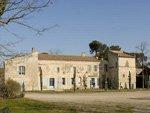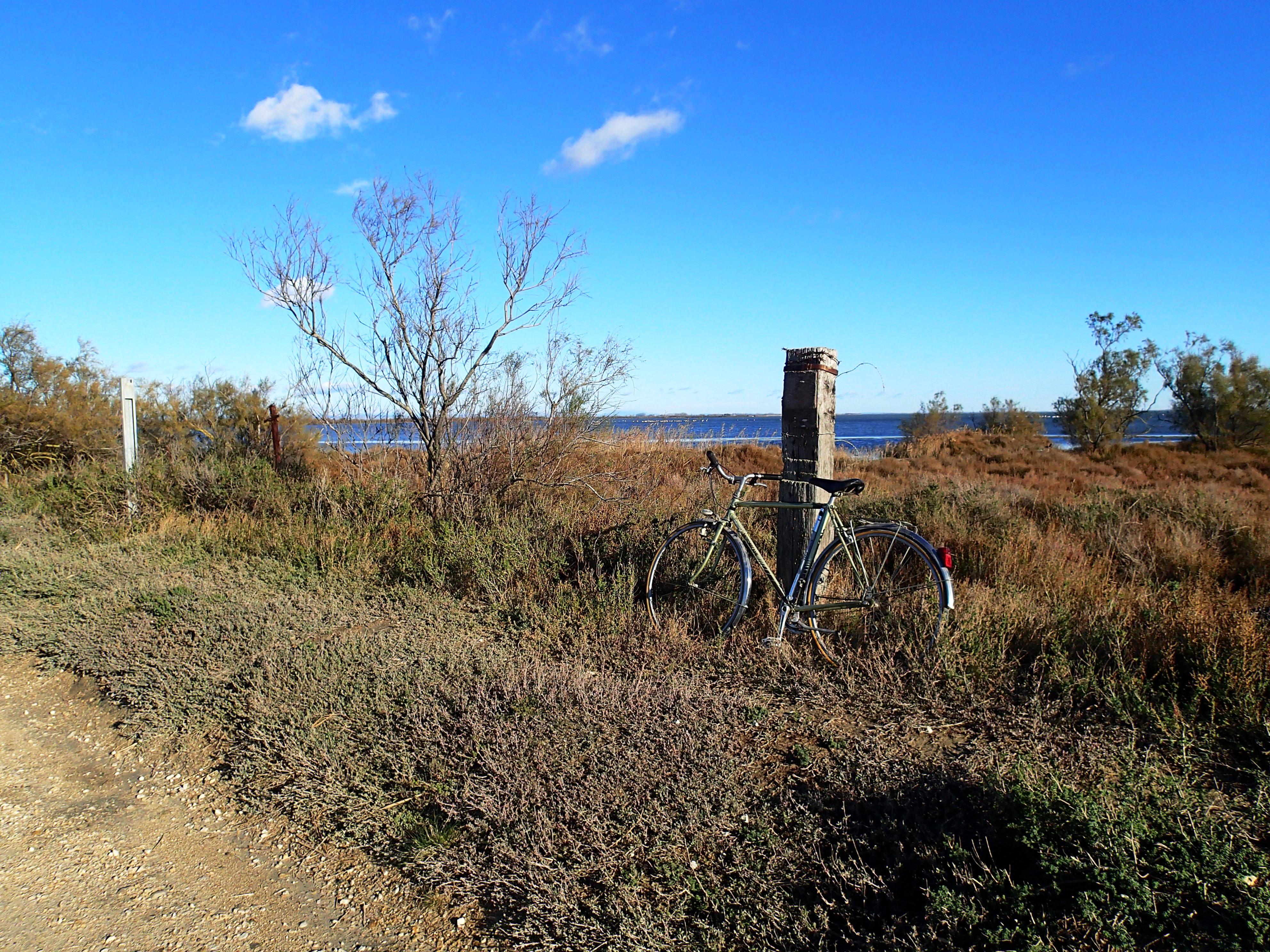
The draille de Méjanes by mountain bike
"This excursion bordering the natural reserve of Camargue through the draille de Méjanes, also called the draille des cinq Gorges is a beautiful retreat along one of the largest wetland reserves in Europe. On the trail riding my bike, all the originality and the heritage interest of these vast areas have revealed themselves, particularly the 283 species of birds including 269 of heritage interest. A true delight!" Philippe Isenmann - RNP of Camargue
9 points of interest

Arènes des Saintes-Maries-de-la-Mer - ©Juliette Primpier - PNR Camargue  Patrimony and history
Patrimony and historyThe arenas of Saintes-Maries-de-la-Mer
The arenas of Saintes-Maries-de-la-Mer were inaugurated in 1931 and can accommodate 4,500 people. They are built in hard material and have a circular shape.. Part of the arena collapsed in 1931, and was rebuilt in 1932. In 1985, they were redesigned by the architect André Marchetti. They offer three forms of bull races: the Camargue race, the Spanish race, and the rejón bullfight where the bull is fought by a rider, the rejoneador.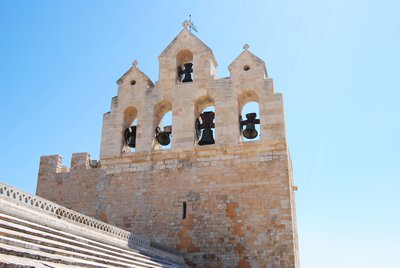
Les cloches de l'église - ©Chloé Scannapiéco - PNR Camargue  Panorama
PanoramaThe fortified church of Saintes-Maries-de-la-Mer
True highlight of the Camargue (15 m), the church offers a breathtaking view of the village and all the Camargue. The 53 steps of a spiral staircase lead to the roof of the church where the panorama unfolds in all its splendour : up there, you can take advantage of a wide angle vision on the city, the sea and the ponds. Intense and sparkling blue of the Mediterranean Sea, purple hue of the Imperial pond The wind, the sun, the view of the calm expanse of the sea invite you to discover this landscape.

Anguille sortie du filet - ©Julien Faure - PNR Camargue  Fauna
FaunaThe eel
At the graus level (or passages), communication canals between the sea and the littoral ponds, you will find fish, towards the flooded sansouïre and the ponds or towards the sea. Migrating species include mullet, sea bass, but also sea bream, sole and especially eel. Born in the Sargasso Sea, she joined the Atlantic and Mediterranean coasts after a long journey. She comes to grow in the coastal ponds or rivers where she spends several years of her life.
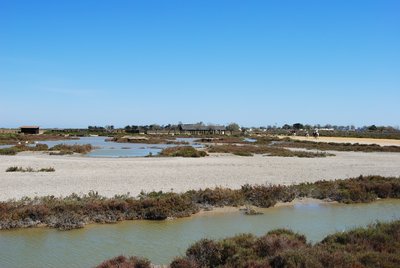
Le long de la draille de Méjanes - ©Chloé Scannapiéco - PNR Camargue  Panorama
PanoramaThe Departmental Reserve of Imperialists
Classified Departmental Reserve, Imperial and Malagroy Ponds were acquired by the Departmental Council of Bouches-du-Rhone in 1964 to protect these fragile natural environments (2,770 ha) which are home to many species of birds. The fishing, a traditional activity in Camargue, is practiced in the Imperial reserve in a boat without motor which imposes the use, as formerly, of the "partygue" (pole). Fishermen are looking for shrimps, eels.
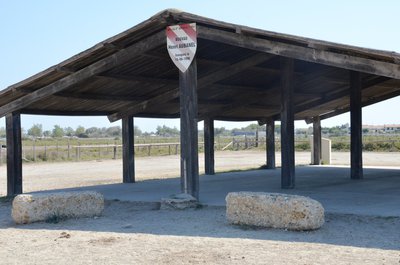
Manade Aubanel Baroncelli Santenco - ©Juliette Primpier - PNR Camargue  Patrimony and history
Patrimony and historyLe Bouvau d’Aubanel
The Baroncelli marquis, famous character of Camargue life, gave to his manade the name of Manade Santenco which means, in Provençal, manade of Saintes-Maries. At the death of the marquis, his son-in-law Henri Aubanel then manages the Santenco manade.. On June 15, 1996, the Saintes-Maries-de-la-Mer inaugurate the Henri Aubanel bouvau, a circular enclosure where bulls are grouped after selection. At the death of Henri Aubanel, his son Pierre manages the manade that he renames Aubanel Baroncelli Santenco manade.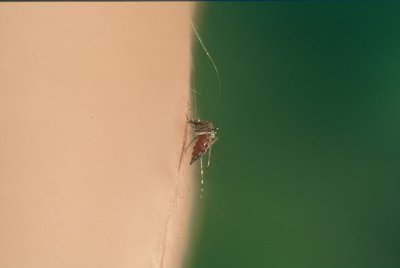
Moustique - Emmanuel Vialet - PNR Camargue  Fauna
FaunaThe Mosquito
There are 40 species of mosquitoes but only ten are biting. Females recover protein from the human blood that are necessary for the maturation of their eggs. They lay thousands of eggs on the soil dried up that are waiting, sometimes years, the rise of the waters to hatch. The mosquito is inconvenient for the man but it is useful to many species: dragonflies, fish, bats ... that feed on them. It is therefore an indispensable link in the Camargue biodiversity.
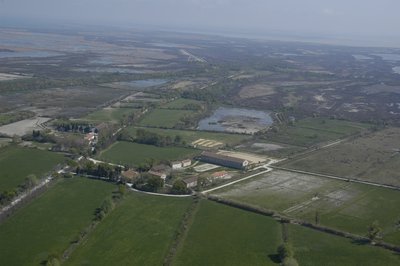
Opus Species - PNR Camargue  Water and rivers
Water and riversThe Consécanière pond
It is a place of passage and rest for many migratory birds In winter, ducks and coots find a relative tranquillity. This natural abundance motivated the need for protection by the Department of Bouches-du-Rhône as well as the Malagroy and Imperial ponds. The water level of the Consécanière pond is maintained artificially low by pumping, the pump rejecting the waters of the pond towards the Malagroy pond. The pond is surrounded by a wooded border of tamarisk.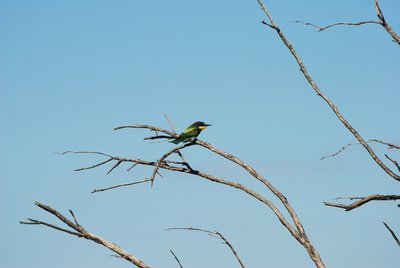
Le guêpier d'Europe - Chloé Scannapiéco - PNR Camargue  Fauna
FaunaThe European bee-eater
Brown top, blue-green underside, black-necked yellow throat, wings and olive-green tail, one would believe the bee-eater escaped from an exotic aviary. He digs his nest in the embankments or canal banks where he lives in the colony. His name comes from his diet, composed of big insects: dragonflies, beetles and wasps that he can seize without being bitten by his long beak. Agile, he crushes his victims against his perch, ejecting the venomous sting, before offering it to his little ones.
Sansouire ouverte - PNR Camargue  Flora
FloraThe Sansouïre
Representative landscape of the lower Camargue, the sansouïre constitutes an environment where salt exerts a total influence. She lives to the rhythm of the seasons: large body of salt water in winter, mudflats in spring and autumn, cracked ground and salt-white desert in summer. The vegetation, low and sheepish, is brown in winter, green in spring and red in autumn. Only a few specialized plant species develop there, because of the strong presence of salt: salicornia, soda, obione, saladella .
Description
From the Tourism Office, on the Van Gogh avenue, go through the village towards the Cacharel road (D85A) for 4 km.
1- Before the Mas de Cacharel, take the dirt road on the right for 11 km.
2- At the Domaine de Méjannes, take the trail in the opposite direction and return to the starting point.
- Departure : Tourism office, Les Saintes-Maries-de-la-Mer
- Arrival : Tourism office, Les Saintes-Maries-de-la-Mer
- Towns crossed : Saintes-Maries-de-la-Mer and Arles
Forecast
Altimetric profile
Recommandations
Be careful, days of strong mistral wind may disrupt your trajectory.
Information desks
the Camargue museum
Mas du pont de rousty, 13200 Arles
Remember to visit the Camargue museum! It is located next to the administrative centre of the Camargue Nature Park.
OT Saintes-Maries-de-la-Mer - Tourisme en Camargue
5 Avenue Van Gogh, 13460 Saintes Maries de la Mer
Transport
Envia transport network Bus line 20 > Arles/Les Saintes-Maries-de-la-Mer through Albaron (free bicycle rack)...
Access and parking
Saintes-Maries-de-la-Mer, at 37 km southwest of Arles through the D570 road. Starting point at the Tourism office.
An alternative to starting from the Domaine de Méjanes (Albaron) at 15 km from Arles through the D570 and the D37 roads (follow the sign Salin-de-Giraud for 2 km, then turn right to the domaine de Méjanes).
Parking :
Access
- Emergency number :
- 114
More information
Report a problem or an error
If you have found an error on this page or if you have noticed any problems during your hike, please report them to us here:

